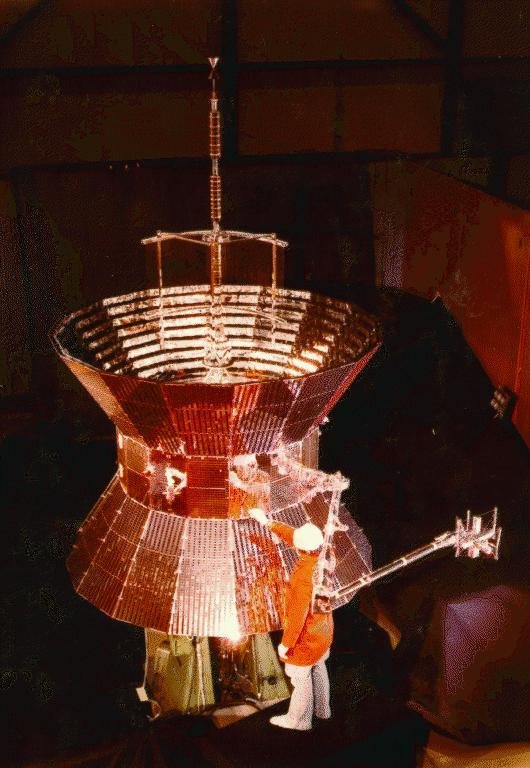
Helios 2 – Second fastest man made object in the world (Feb 2020): Helios 2 was the successor of Helios 1 with better performance and technology, and also the predecessor of Parker solar probe. It was the second spacecraft launched into heliocentric orbit on 15 January 1976 by NASA to examine the sun. It could generate a massive and maximum speed of 158,000 miles per hour / 252,800 Kmh. The launch site and the launch vehicle were Cape Canaveral SLC-41 and Titan IIIE / Centaur.
Table of Contents
Mission
Its mission was to investigate solar processes, i.e., corona, solar wind, magnetic field, etc. It reached the sun’s orbit, 26.55 million miles away from the sun. This massive record was set by Helios 2 on 17 April 1976. Later, this difficult record was broken by the Parker solar probe on 29 October 2018. Now, Parker solar probe has become the closest artificial object to the sun. It also provided the information of the three comets: C/1975V1 West, C/1978H1 Meier, and C/1979Y1 Bradfield.
Difference between Helios 1 and Helios 2
- Helios 2 was the twin of Helios 1, but they were different from each other. This fastest spacecraft had reached a distance of 1.9 million miles (3 million kilometers) more than that of Helios 1.
- This fastest spacecraft was protected by a shield that made it able to survive in extreme temperatures and heat. The spacecraft also comprised of the heat disperser, which dispersed the heat and helped in maintaining the temperature.
- It could withstand 10 percent more heat (68 degrees Fahrenheit or 20 degrees Celsius more) as compared to Helios 1. It could survive in higher temperatures of about 370 degrees Celsius (700 °F).
What happened to Helios 2?
The lifespan of Helios 2 was January 1976 – March 1980. The spacecraft’s transmitter lost the connection, no critical information was communicated further to the ground controllers. As the connection was lost, NASA closed the project on Jan. 7, 1981.
Parker solar probe

Helios 2 was not only the spacecraft to investigate the sun but also the second fastest man made object in the world. The mission was successful in communicating important information to the ground controllers related to the sun, i.e., magnetic field, corona, solar winds, etc., but could not survive in very high extreme temperatures, i.e., more than 500 degree Celsius. It could not reach nearer to the sun. So, keeping in mind this problem, Parker solar probe was invented. It was launched by NASA on Aug 12, 2018, at 7:31 UTC, with a mission to touch the sun.
Conclusion
I want to conclude that Helios 2 was a great invention; it provided beneficial information to NASA related to the sun. It is also the second fastest spacecraft in the world. Before this invention, we have very little knowledge of the sun. So, it has an essential role in giving information to us.
I hope you have liked this article related to Helios 2 and will comment below and share it with your friends.
See also:
- Parker Solar Probe | Fastest man made object in the world (Feb 2020)
- Bloodhound | Fastest Car in the World 2020
- Cadillac Cyclone XP-74 1959 – Concept car (Feb 2020)
- What is a rocket and its uses – How do rockets work
- Lightyear one – Car on solar energy and Long range electric car
- How big is the Universe? | 93,000 million light-years

